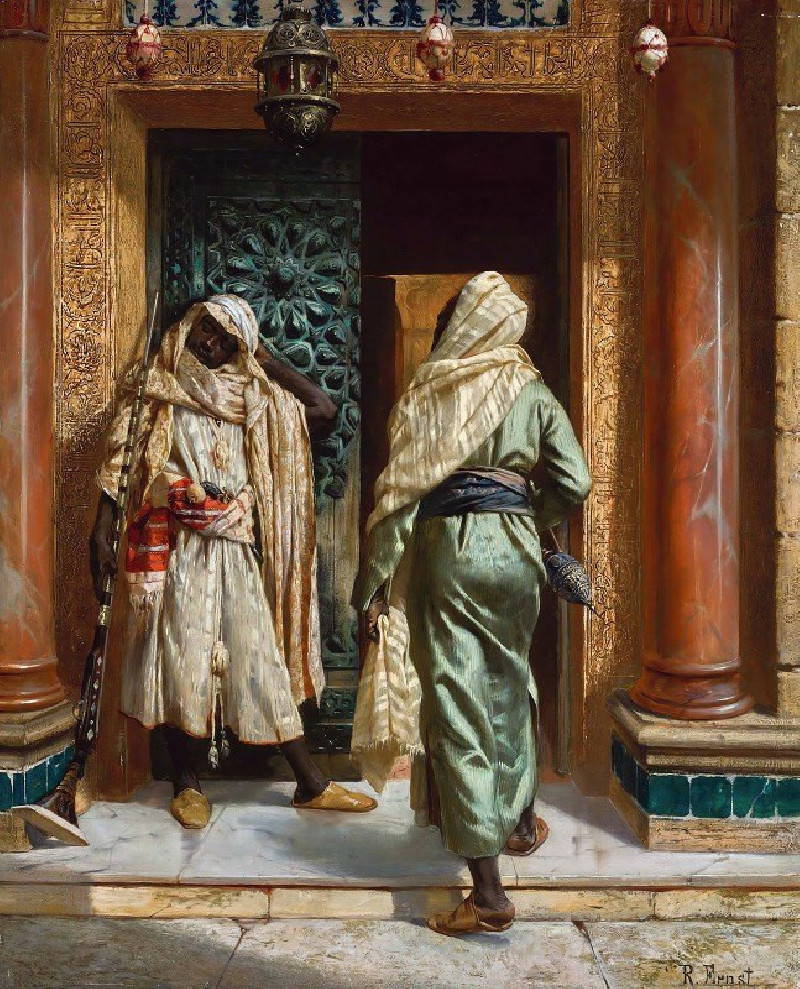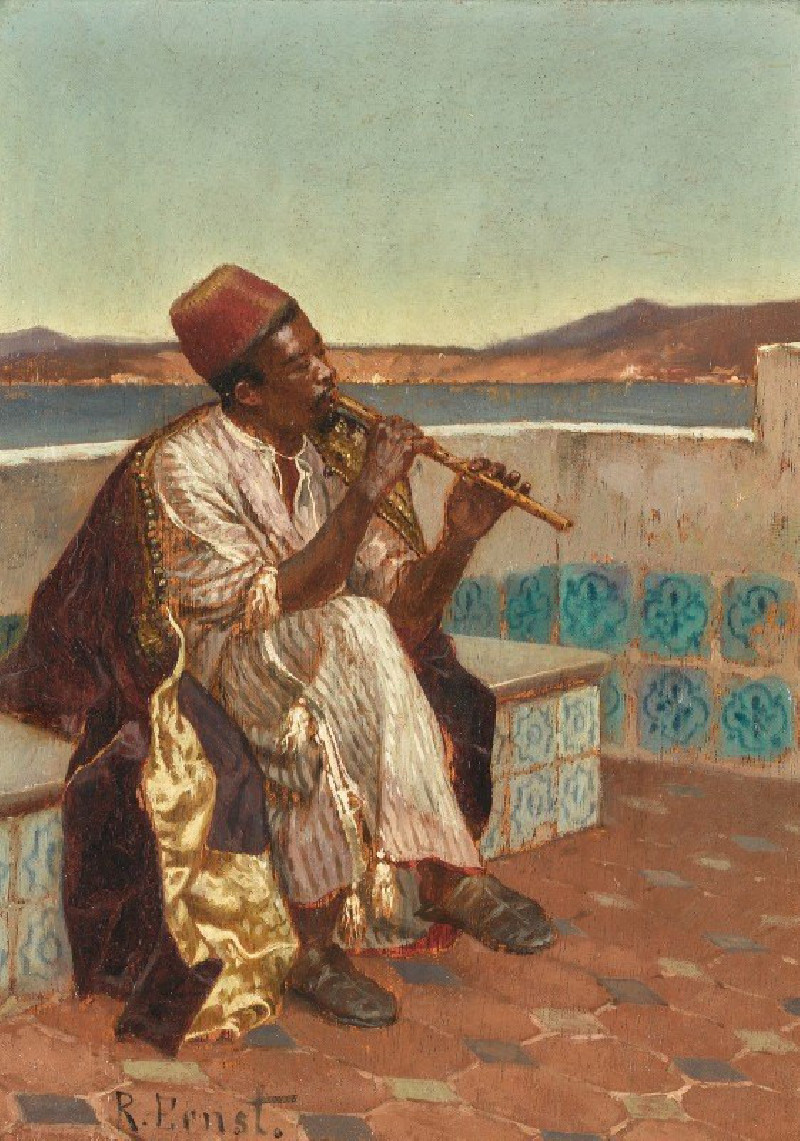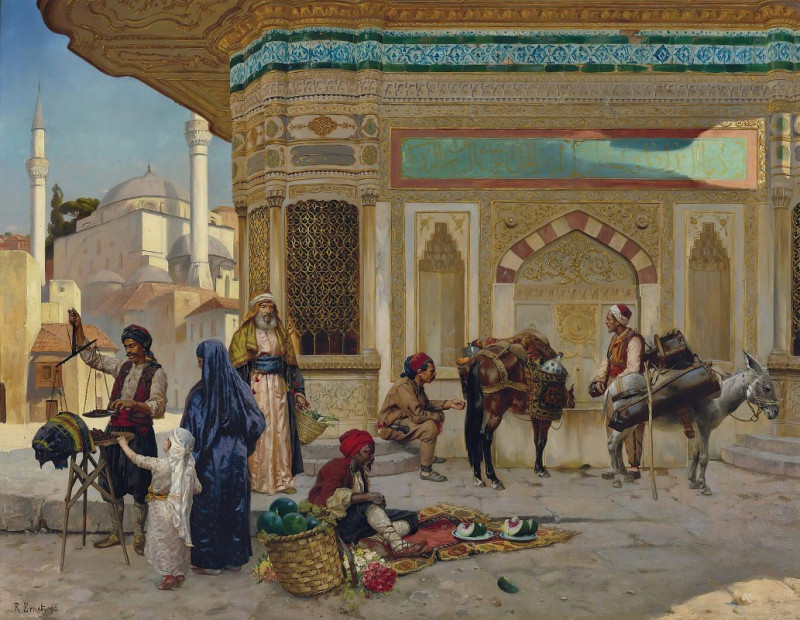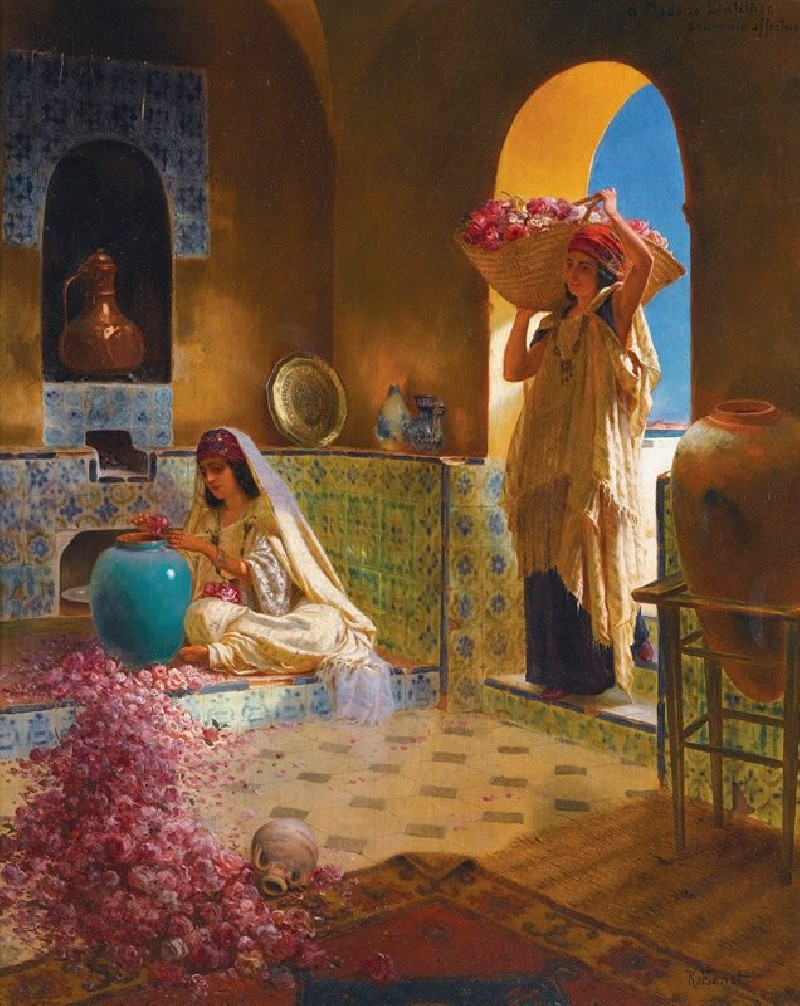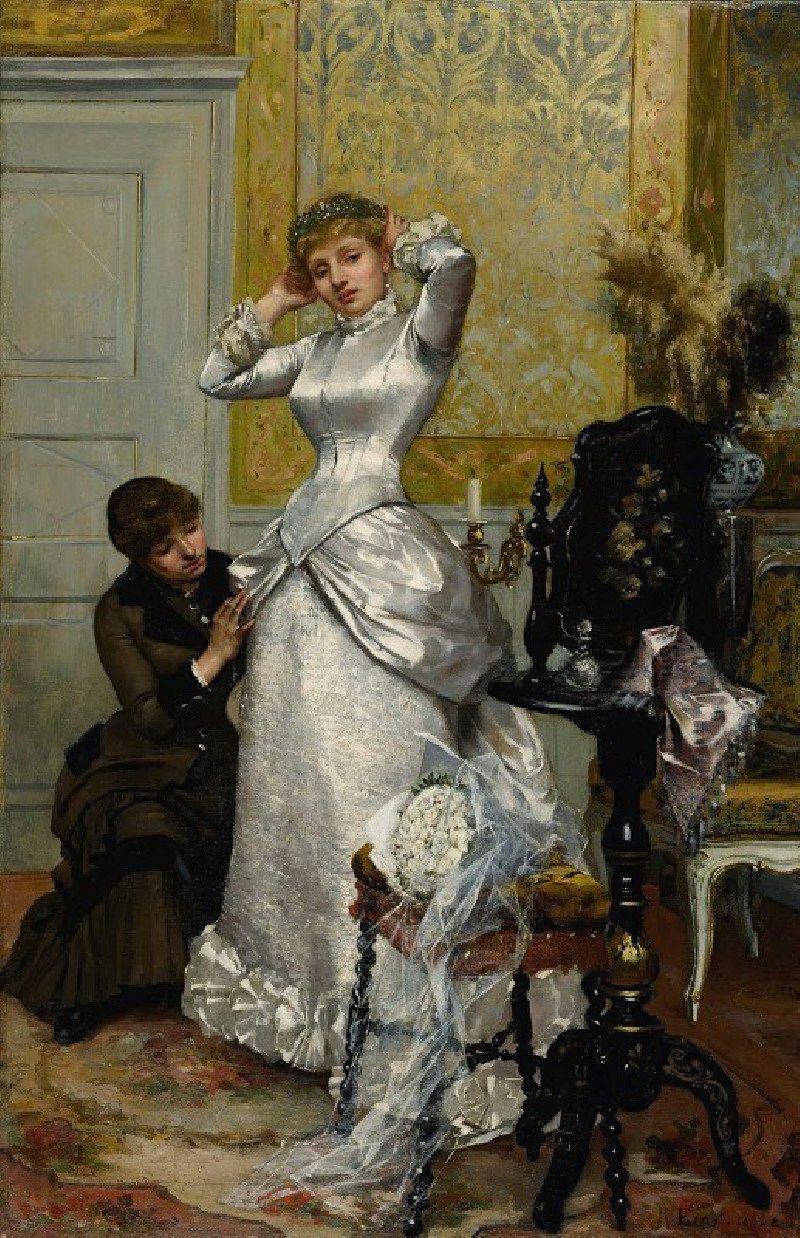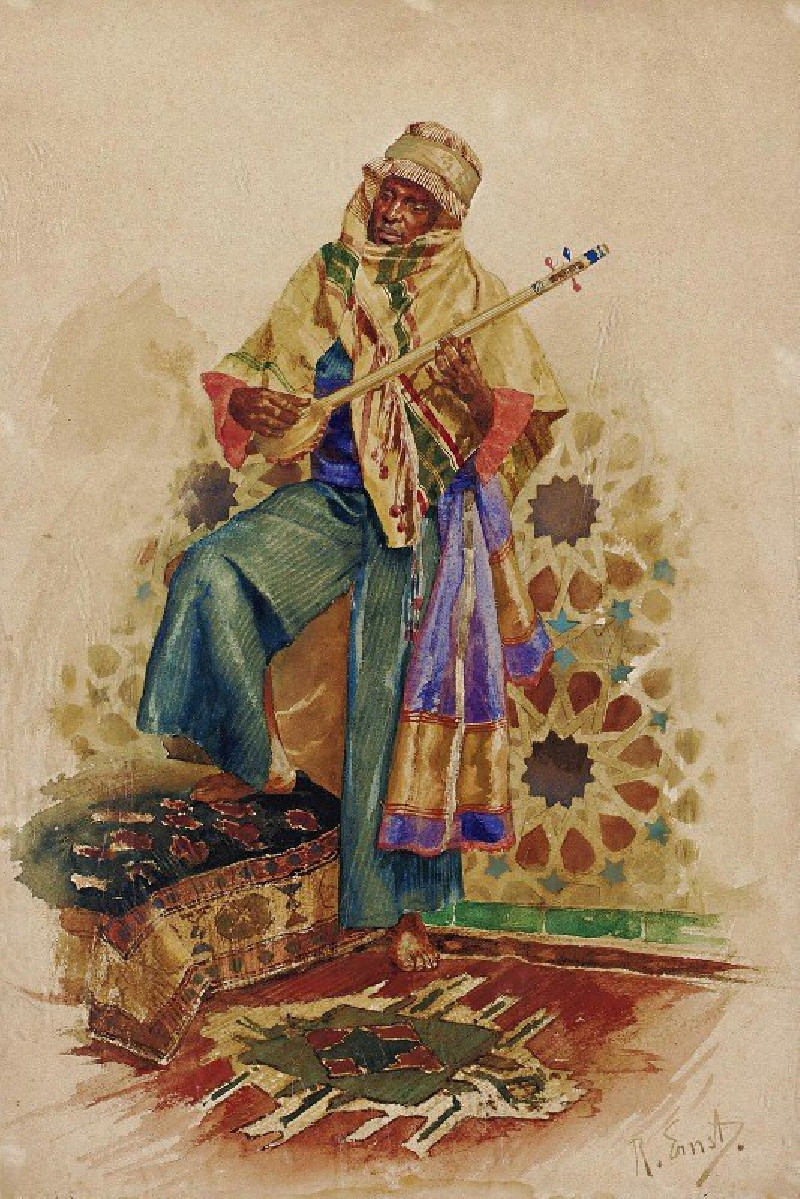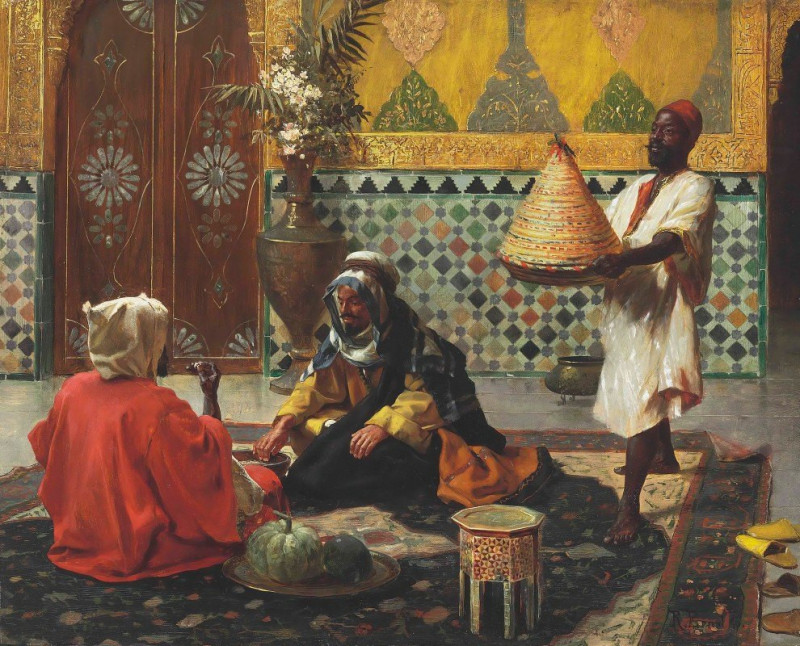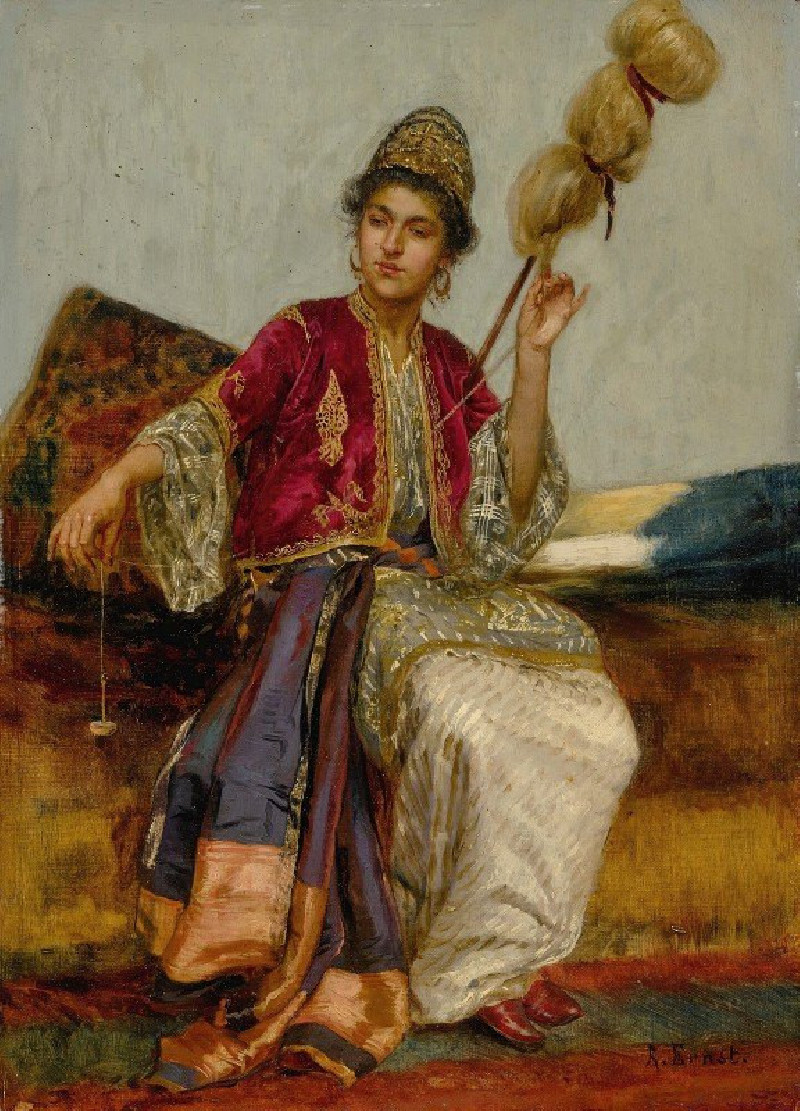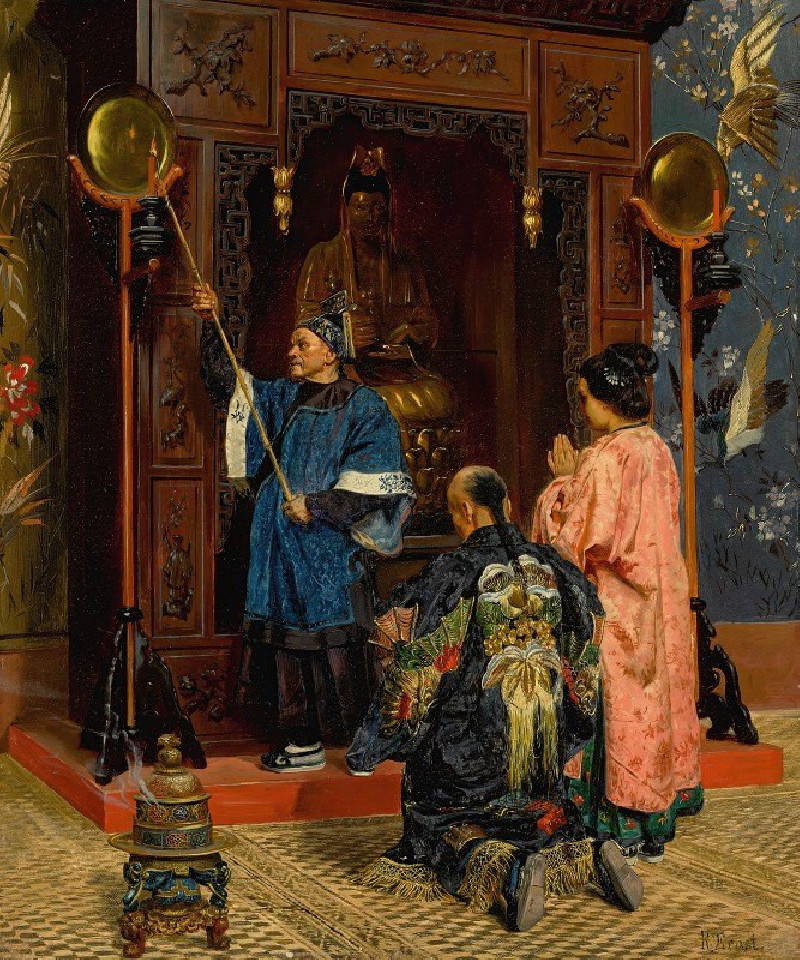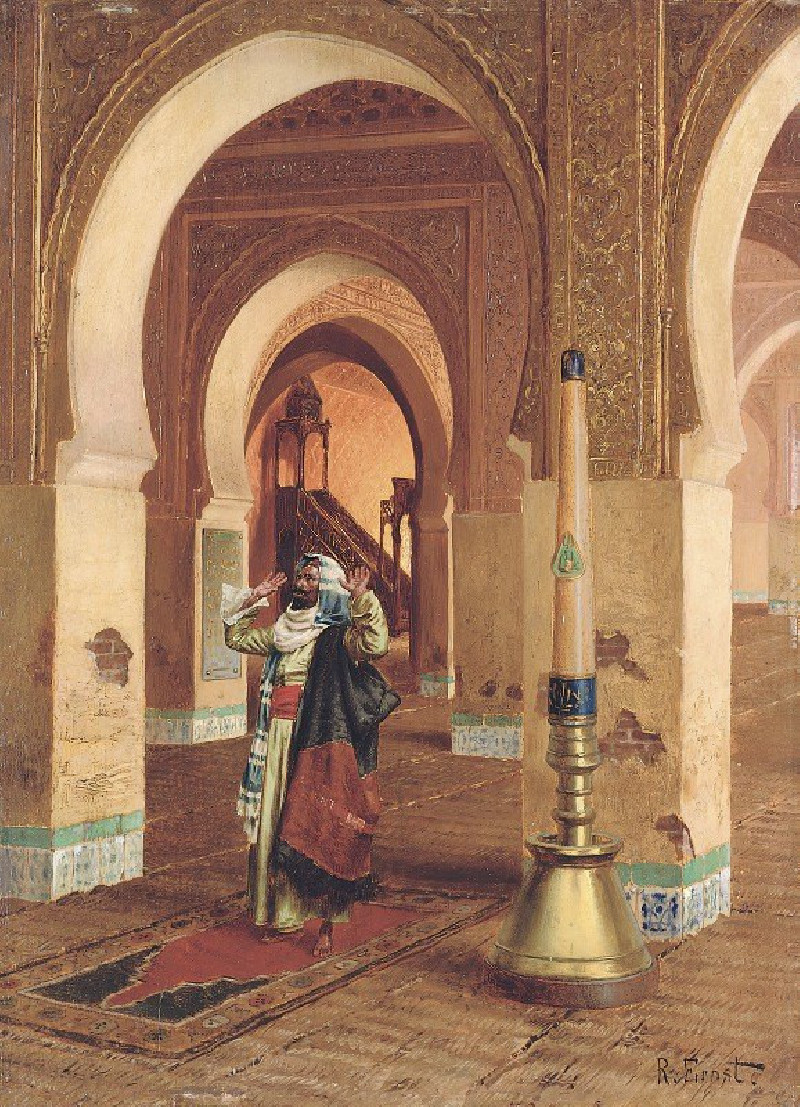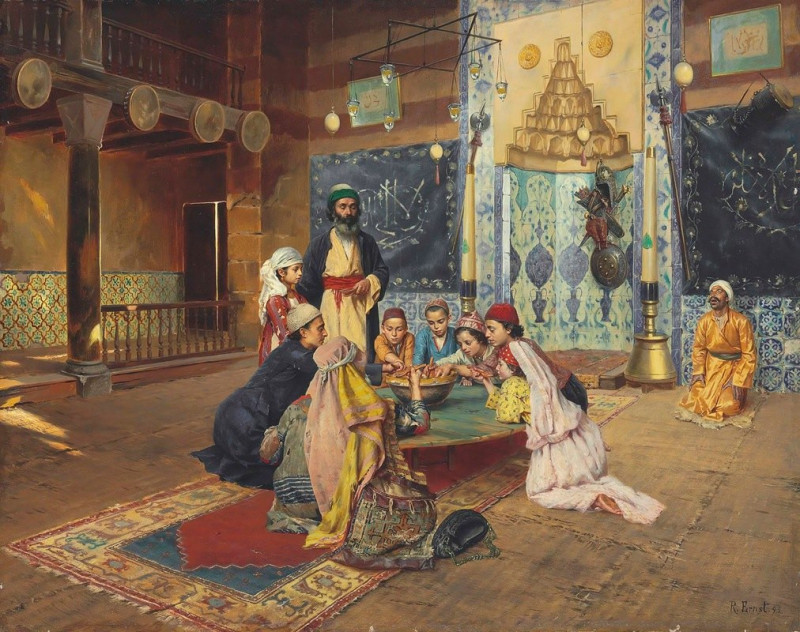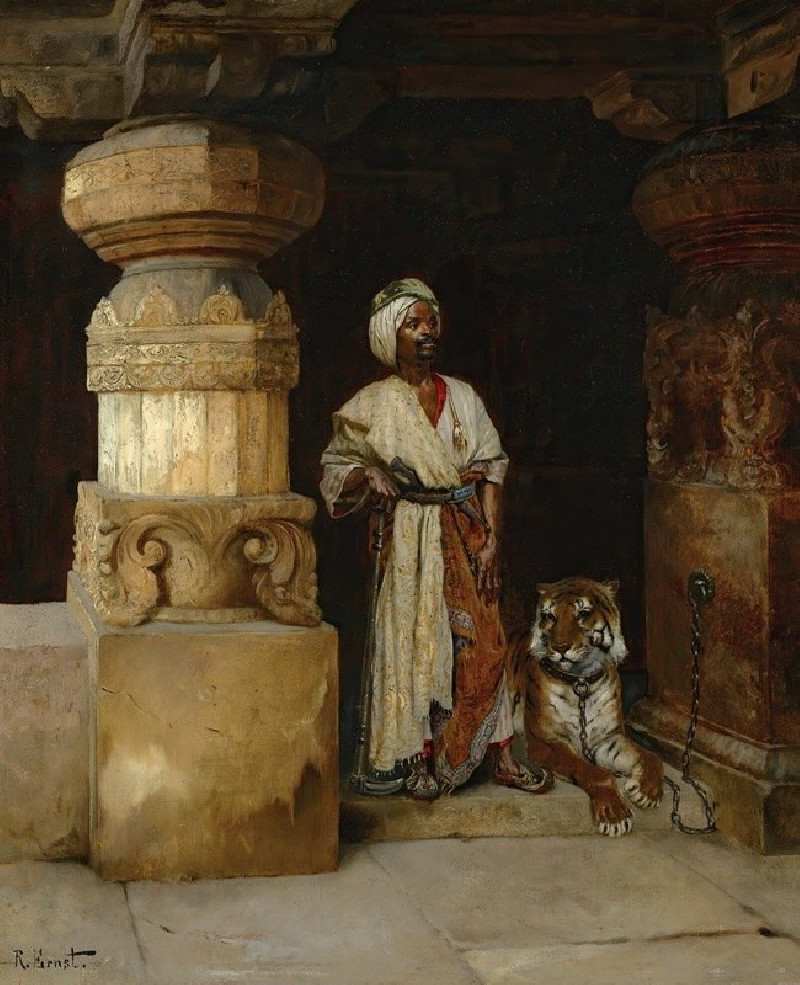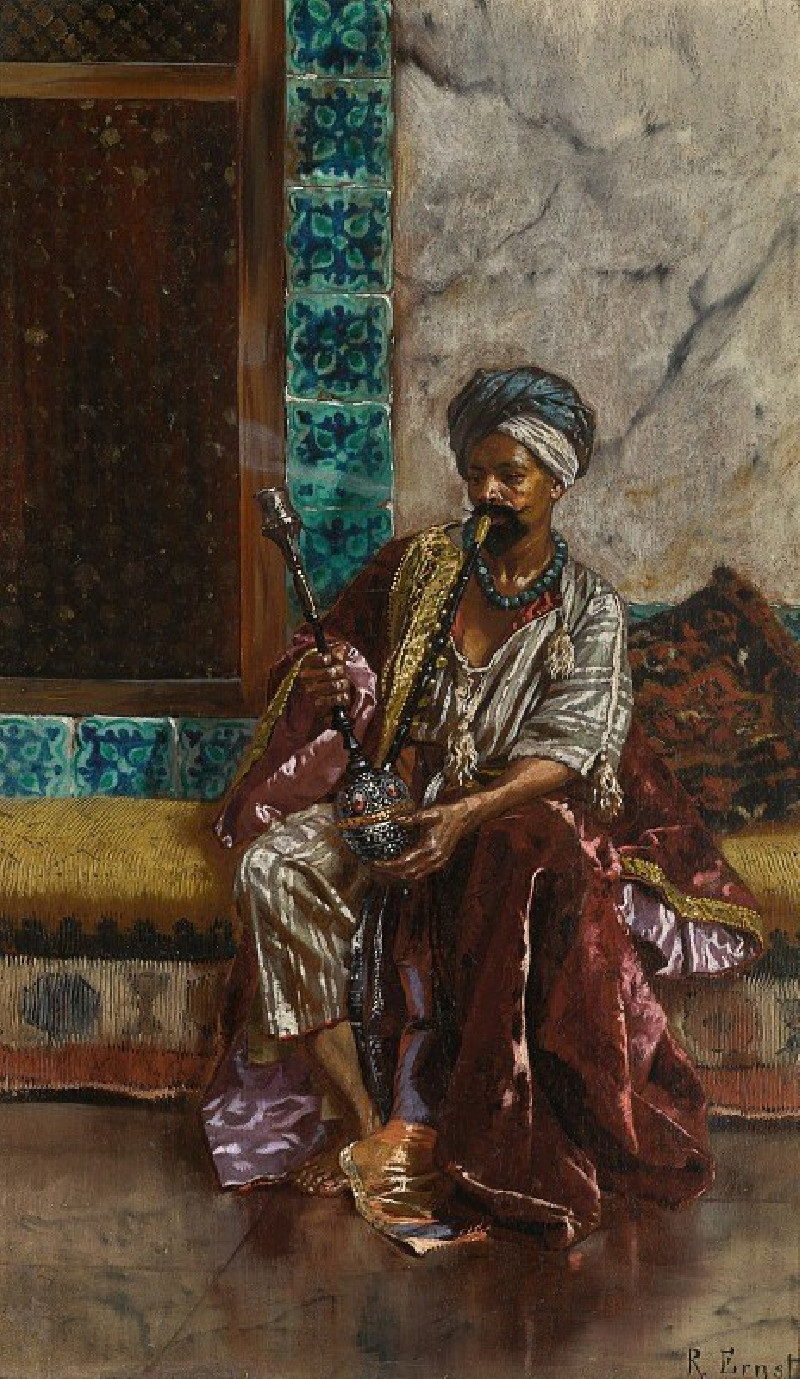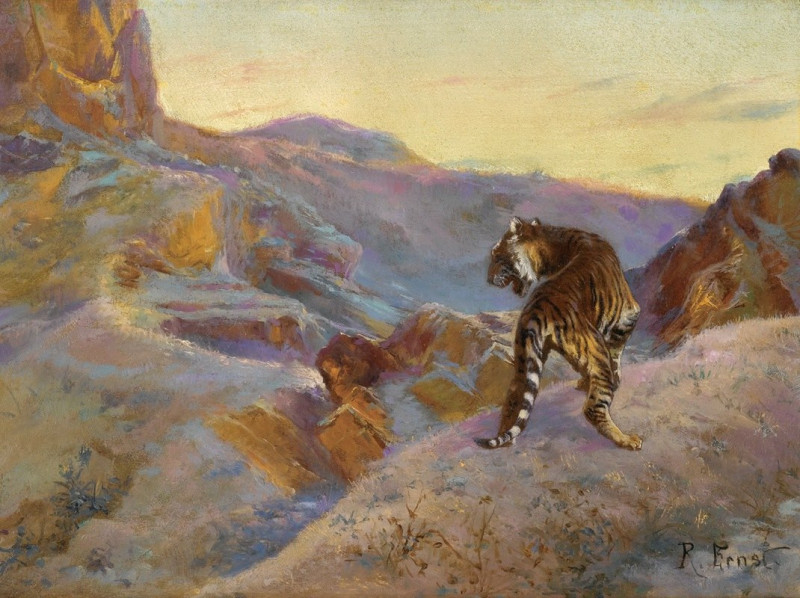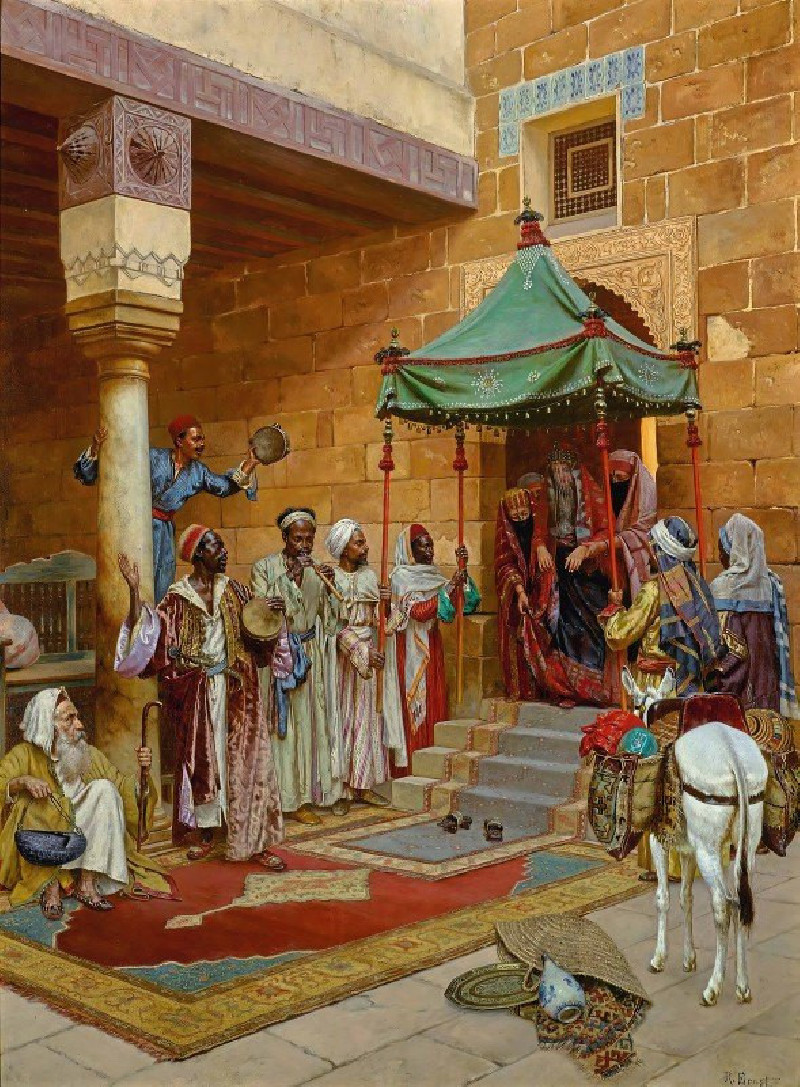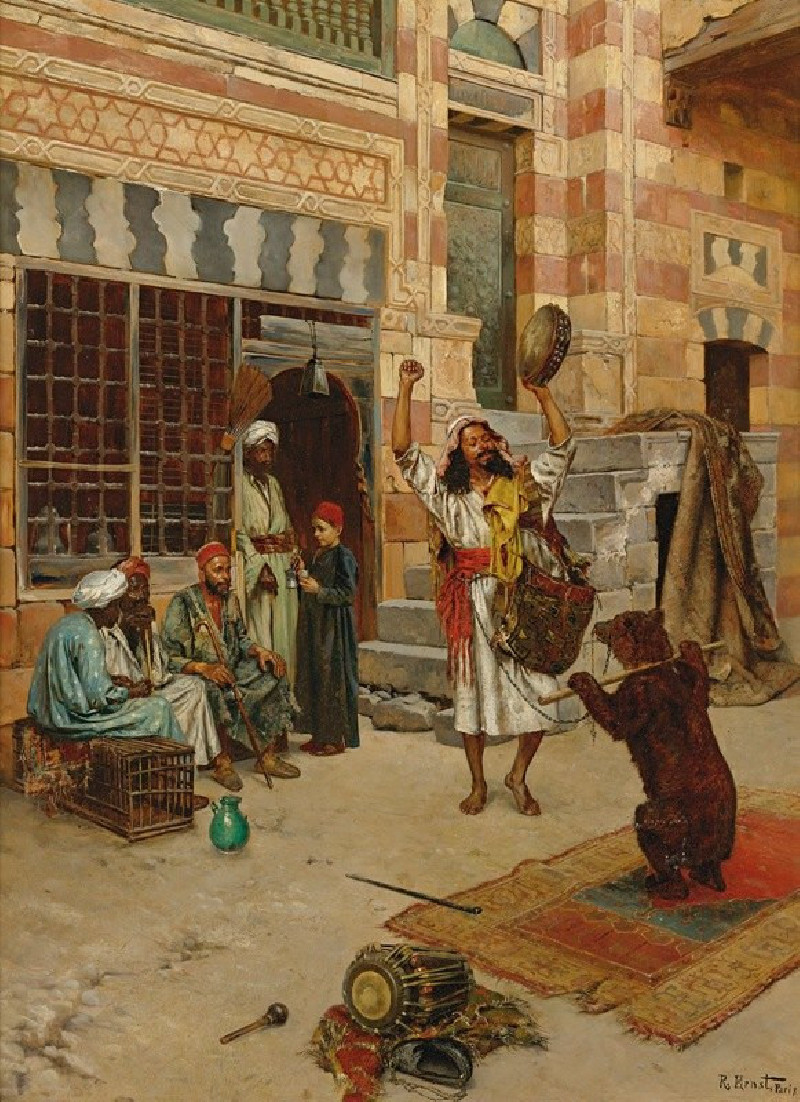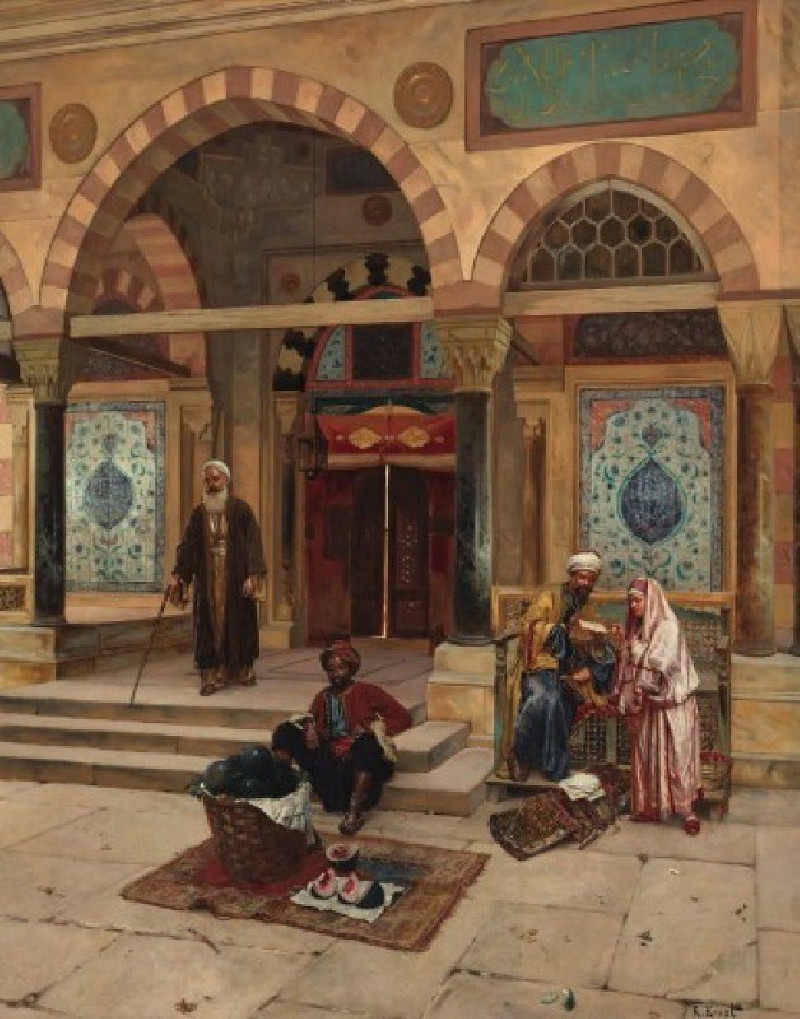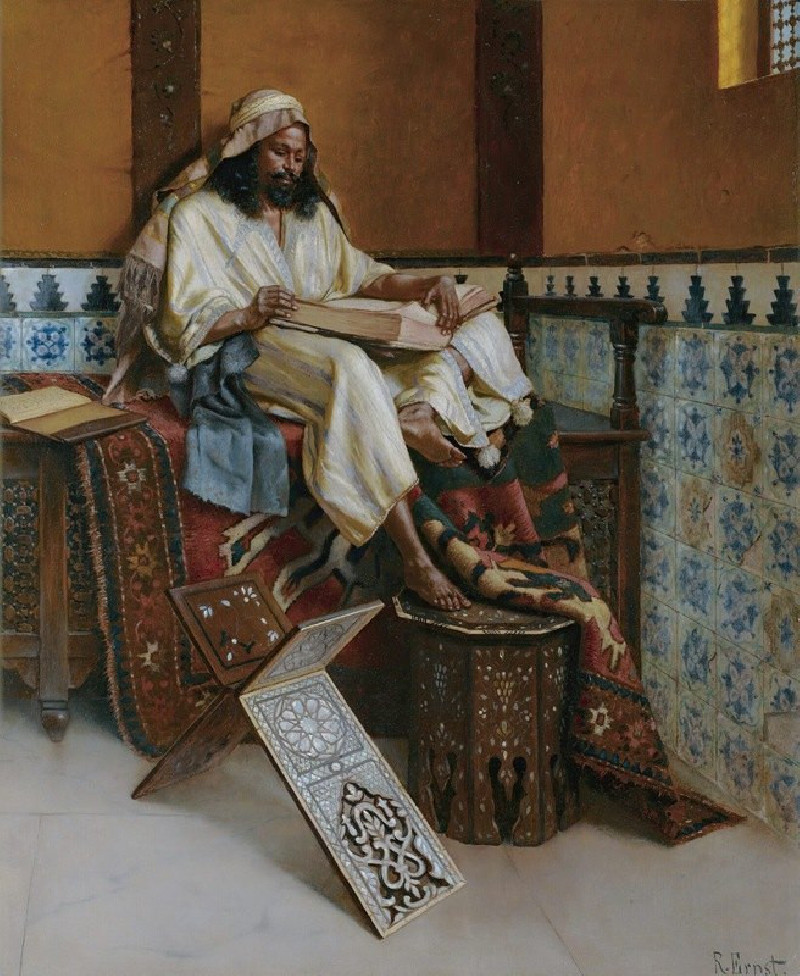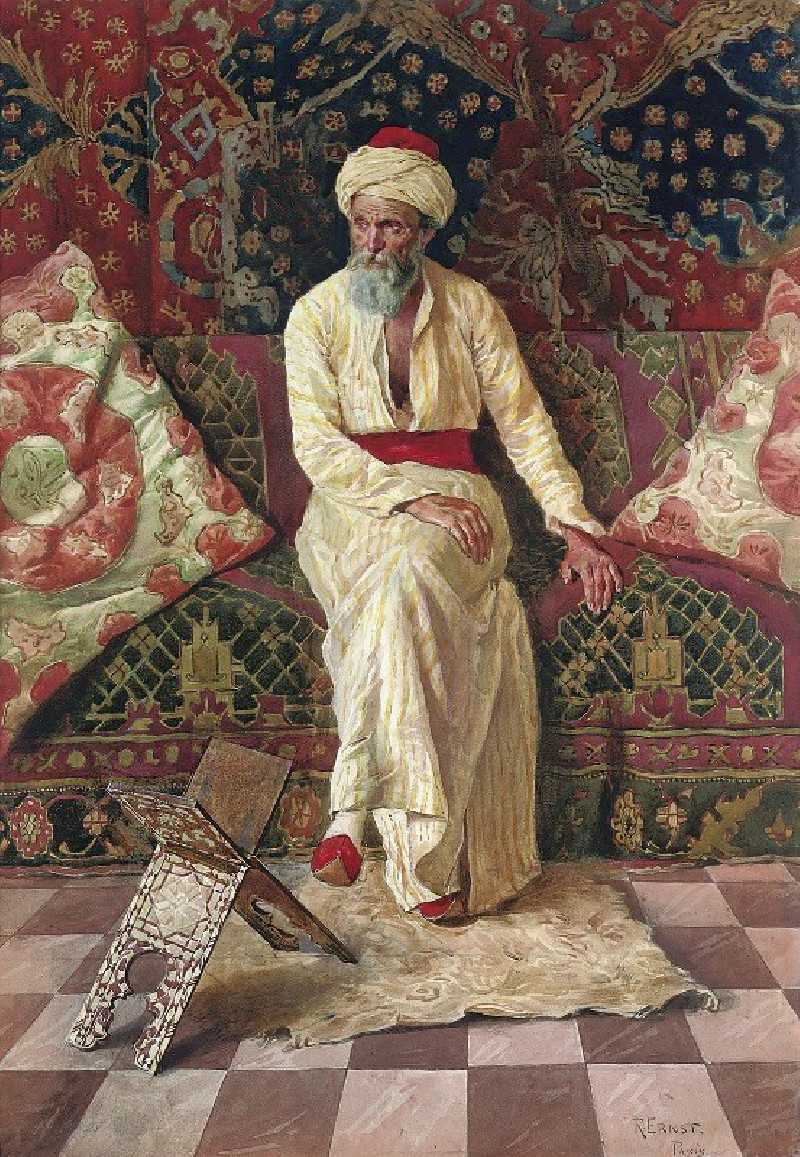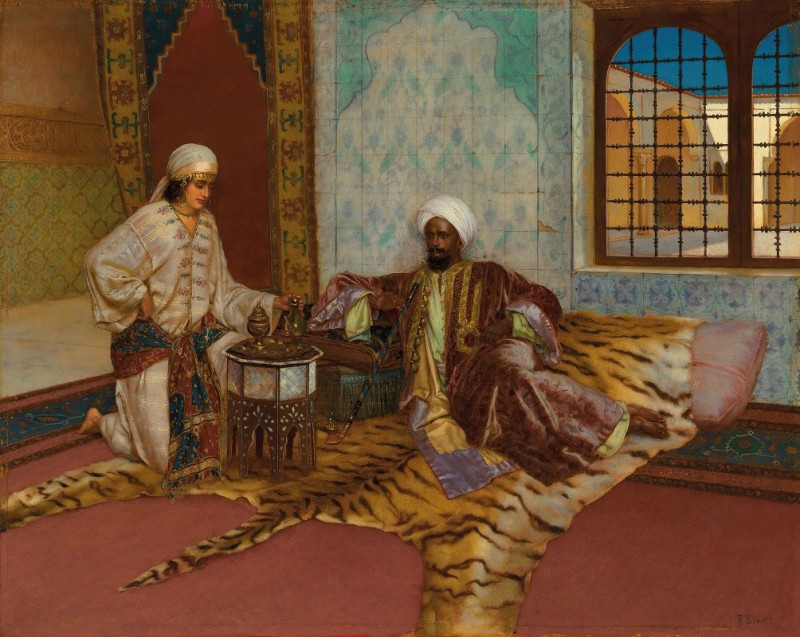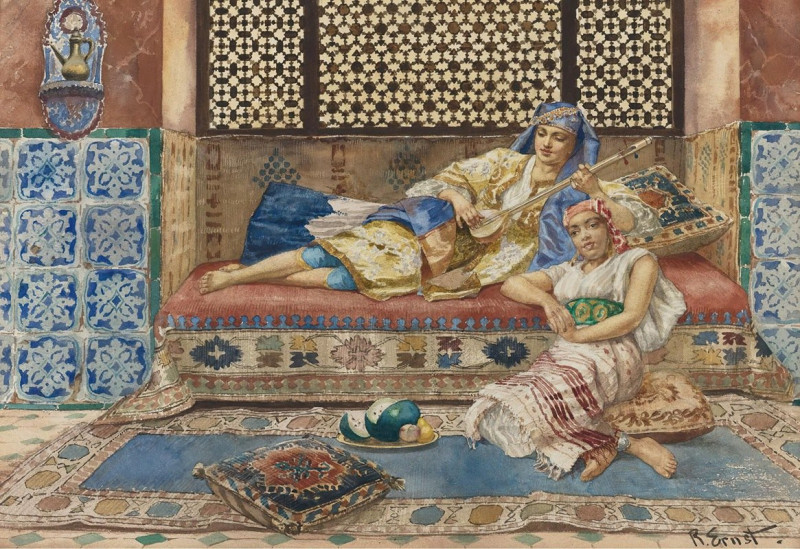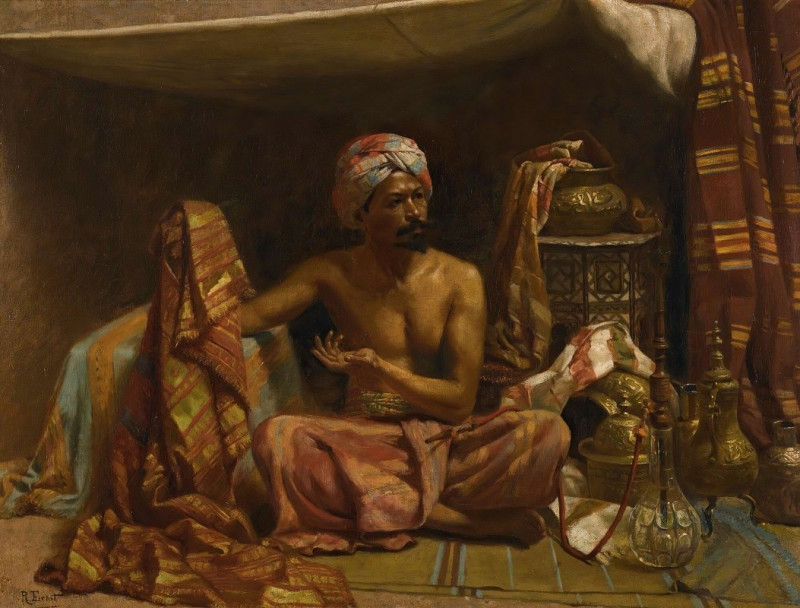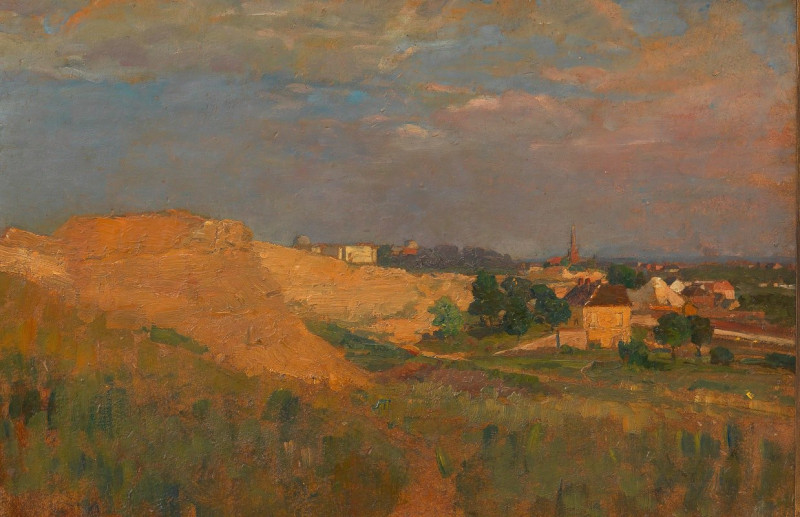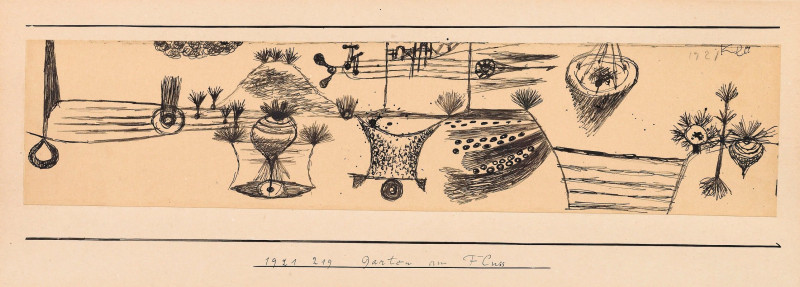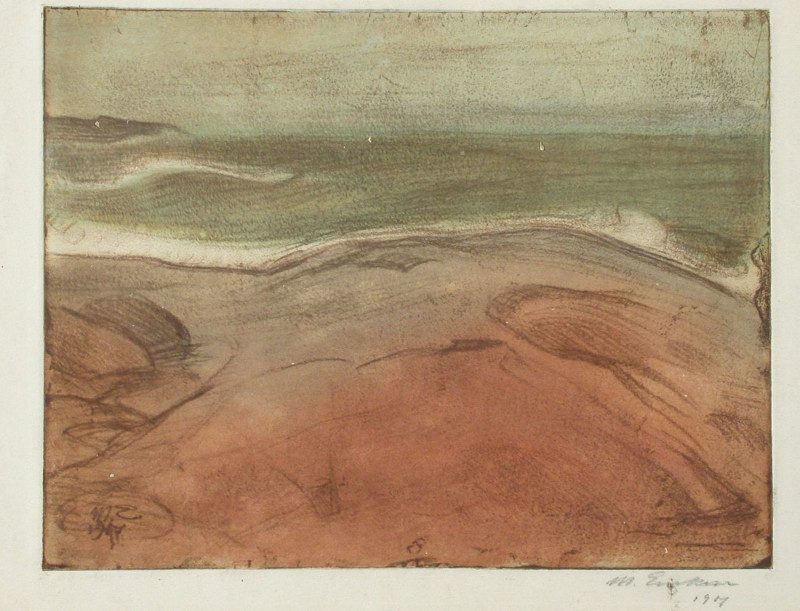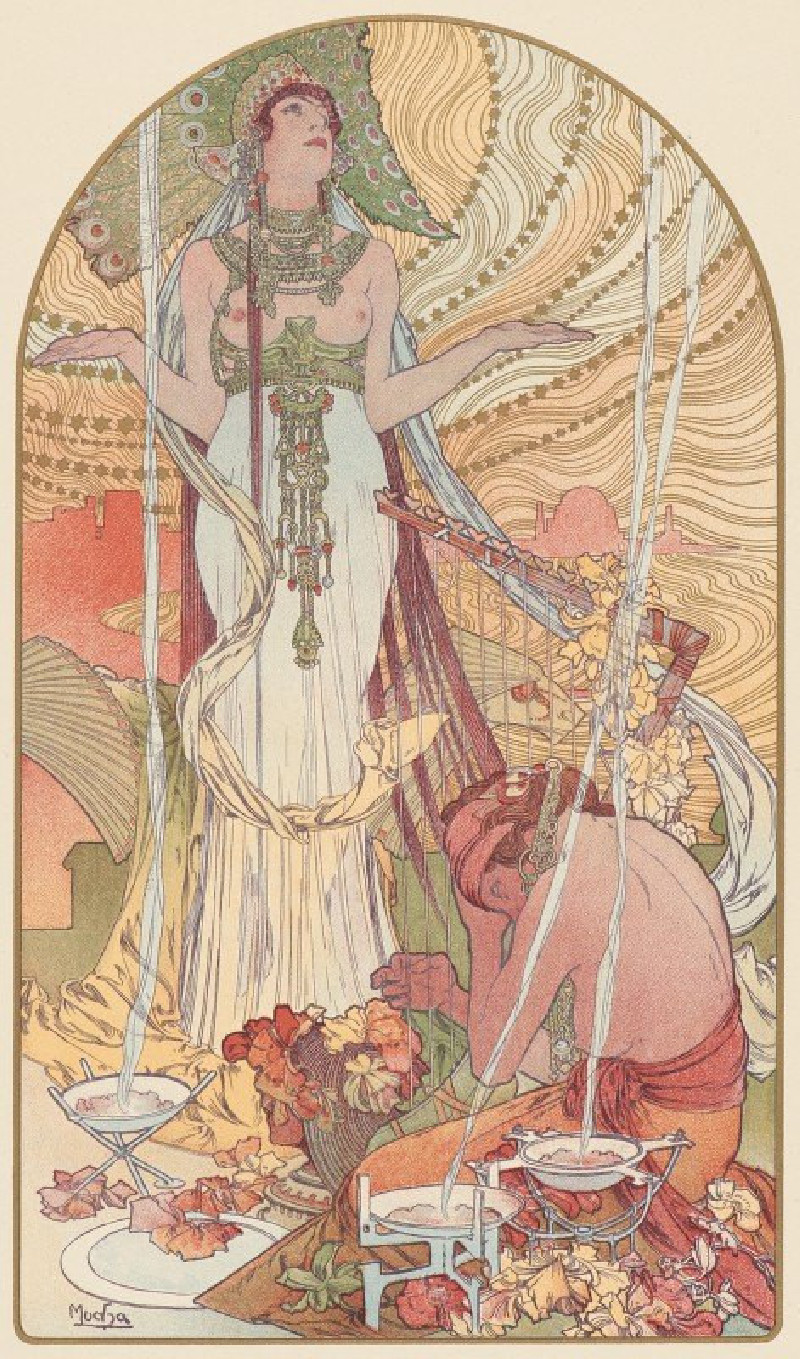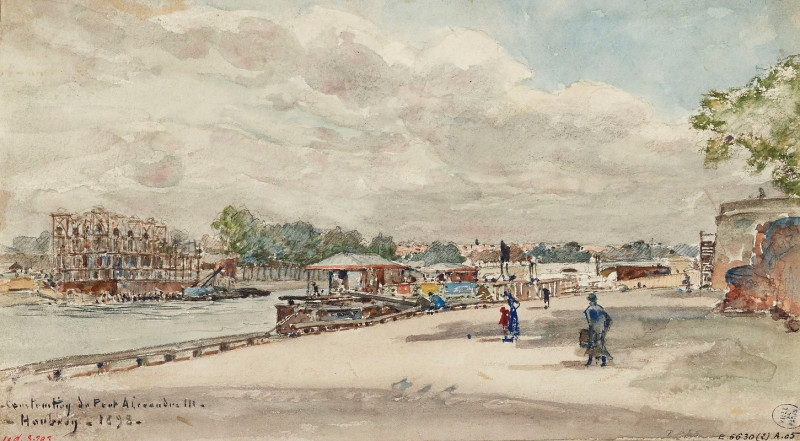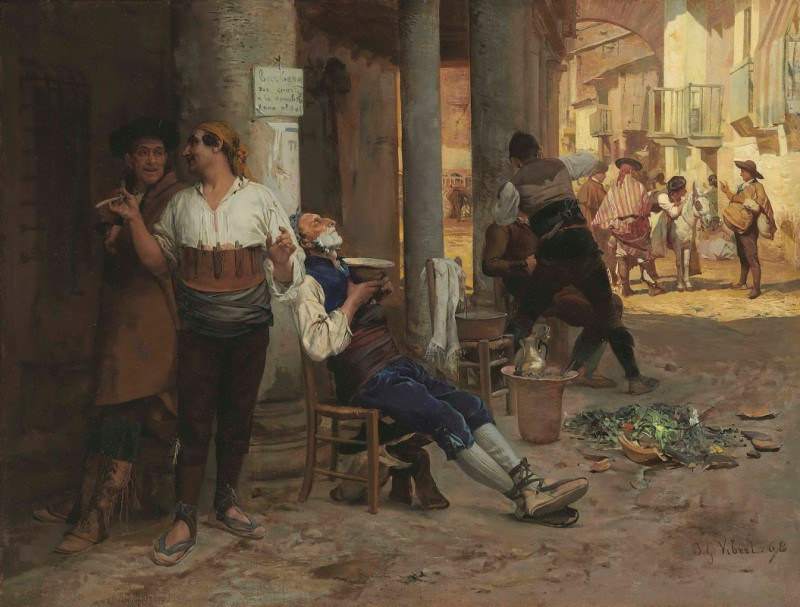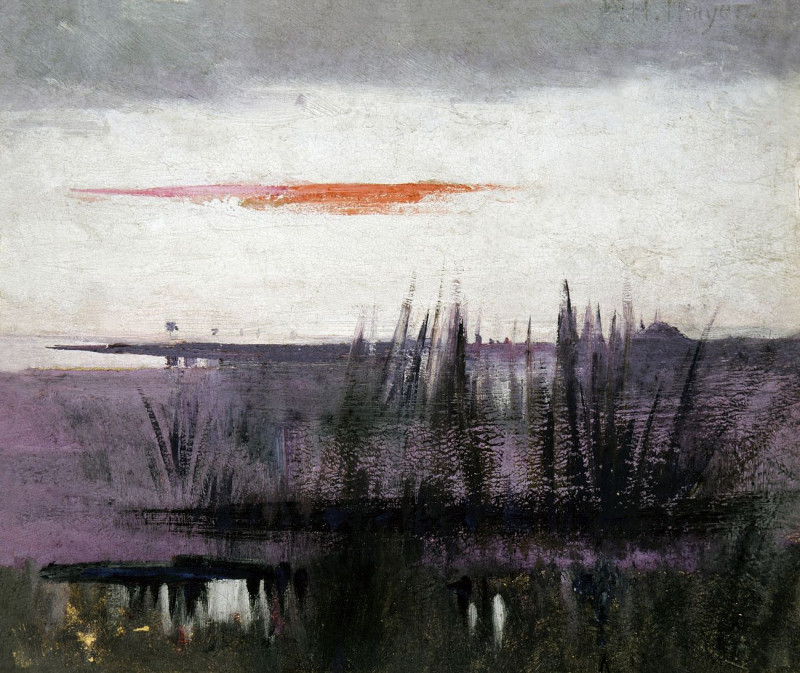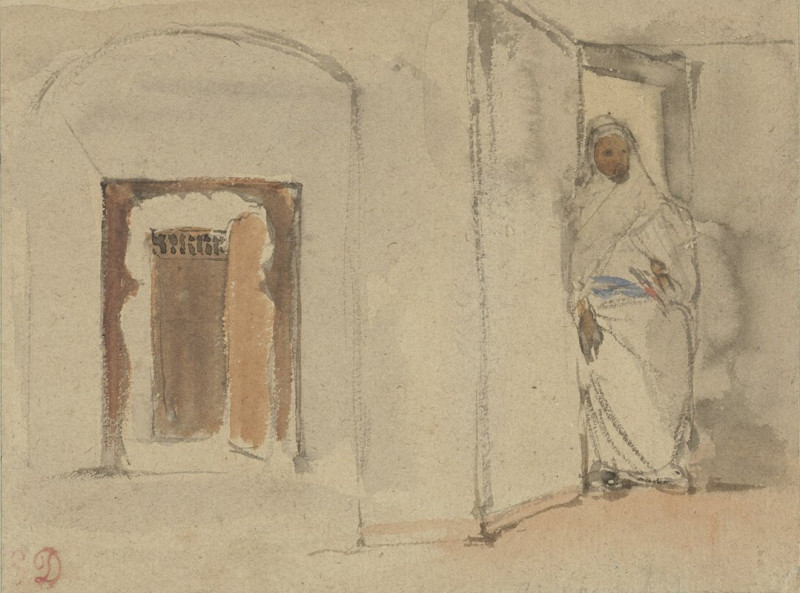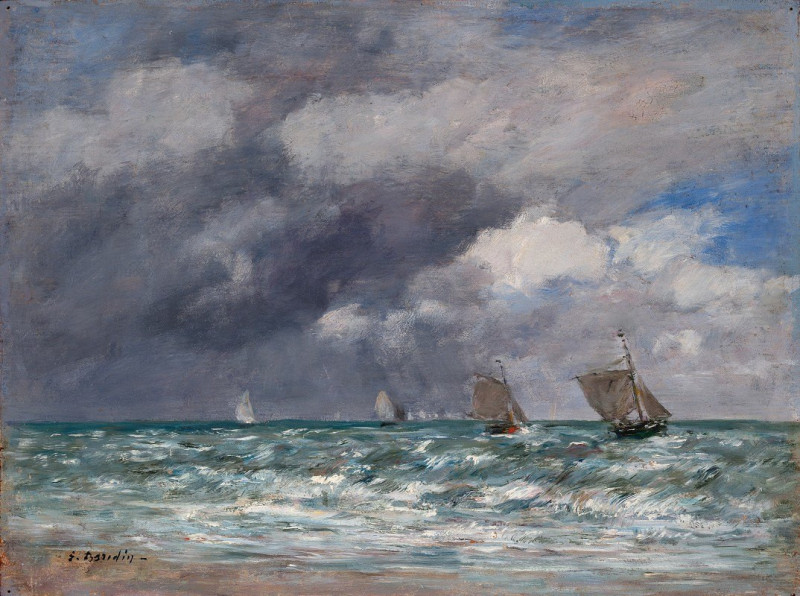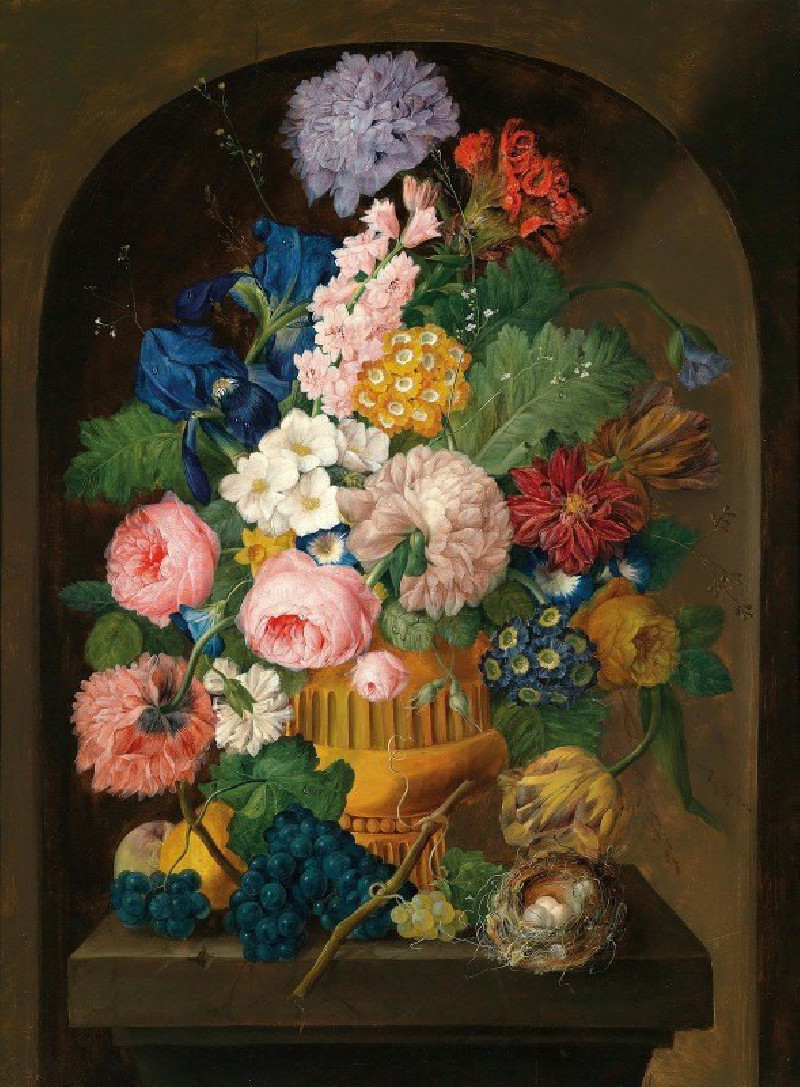The Dozing Guard
Technique: Giclée quality print
Recommended by our customers
More about this artwork
"The Dozing Guard" is a captivating masterpiece by the Austrian artist Rudolf Ernst, renowned for his expertly rendered Orientalist scenes. This painting delves deeply into the tranquility and mysterious allure of Middle Eastern culture, possibly set within a Moroccan or similar North African locale.The scene portrays two figures at the entrance of a richly adorned space, hinted by the intricate tile work and ornate pillars. The interior gateway flaunts a beautifully detailed door with a design that celebrates Islamic artistry. The figure on the left leans languidly against a column, seemingly caught in a moment of rest or sleep, hence the title "The Dozing Guard." His posture and relaxed grip on a rifle suggest a momentary lapse in his duties. Dressed in traditional garments that blend beautifully with the textured backgrounds and their detailed patterns, his presence adds a human touch to the serene architectural setting.Across from him, another individual, turned away from the viewer, appears to be entering the building. This person's movement provides a contrast to the stillness of the sleeping guard, adding a dynamic element to the composition.Painting with great attention to detail, Rudolf Ernst brings the viewer into a world where every texture, from the clothing to the crumbling walls, is palpable. The light filtering through the scene illuminates surfaces and highlights the exquisite craft of the architectural elements.This artwork not only celebrates the visual richness of the Middle East but also evokes a story, inviting viewers to ponder the moments leading up to the scene and the quiet stories unfolding within these walls.
Delivery
Returns
Rudolf Ernst was an Austro-French painter, printmaker and ceramics painter who is best known for his orientalist motifs. He exhibited in Paris under the name "Rodolphe Ernst".
He was the son of the architect Leopold Ernst and, encouraged by his father, began studies at the Academy of Fine Arts Vienna at the age of fifteen. He spent some time in Rome, copying the old masters, and continued his lessons in Vienna with August Eisenmenger and Anselm Feuerbach.

